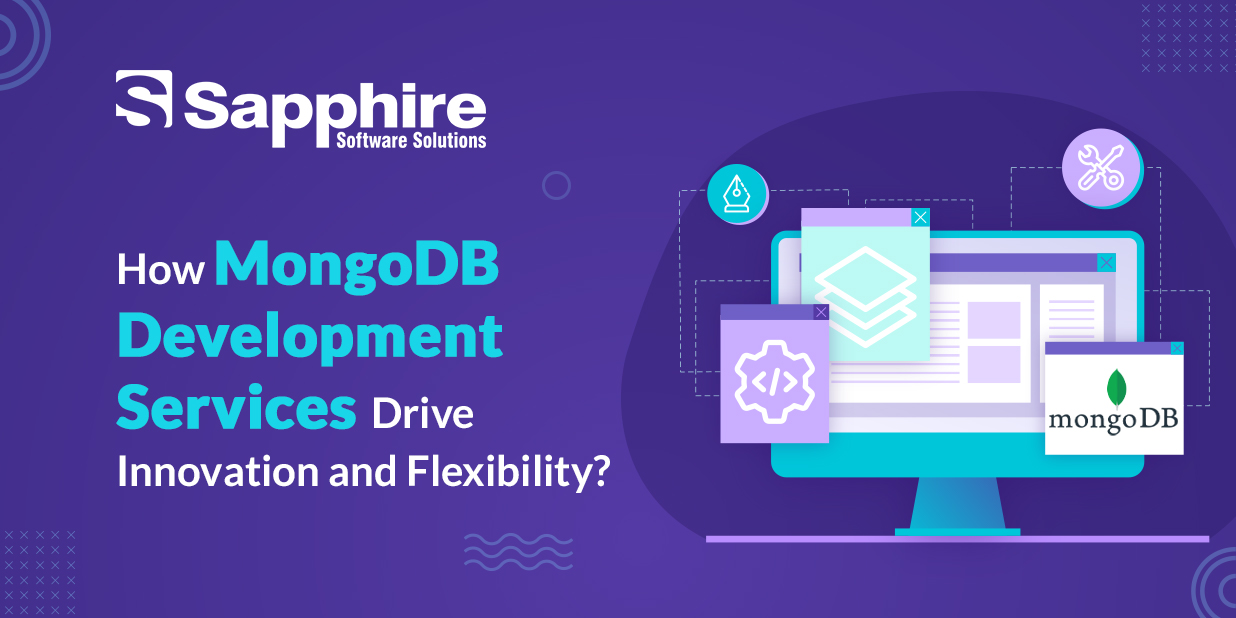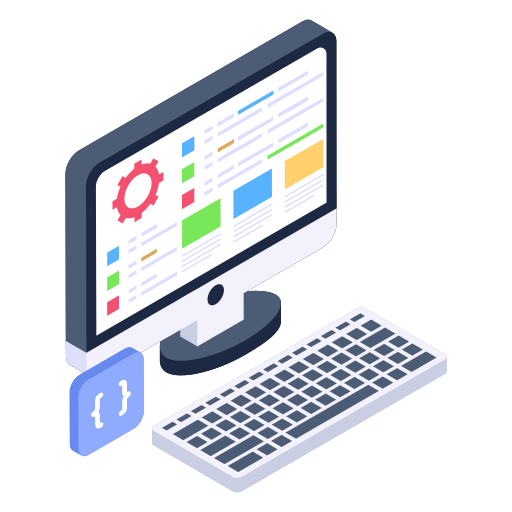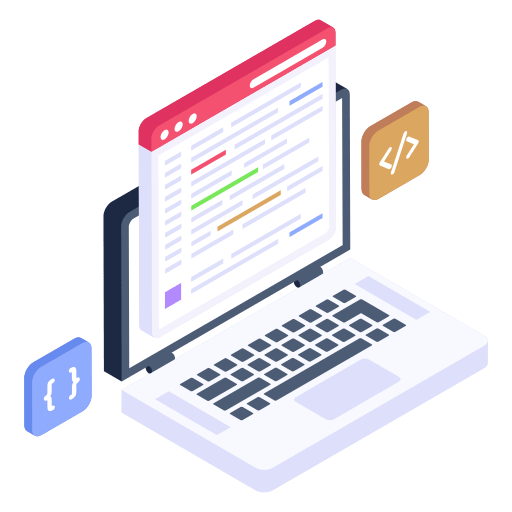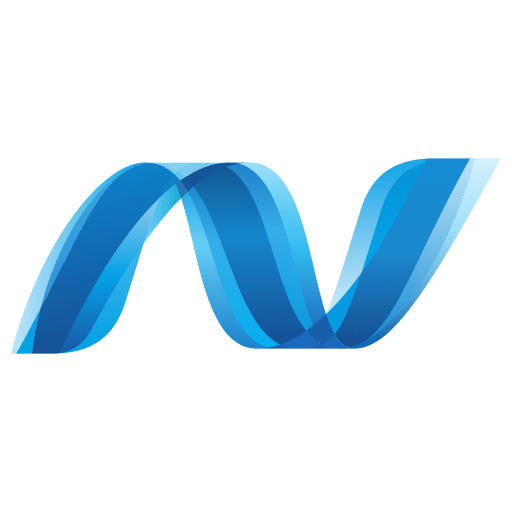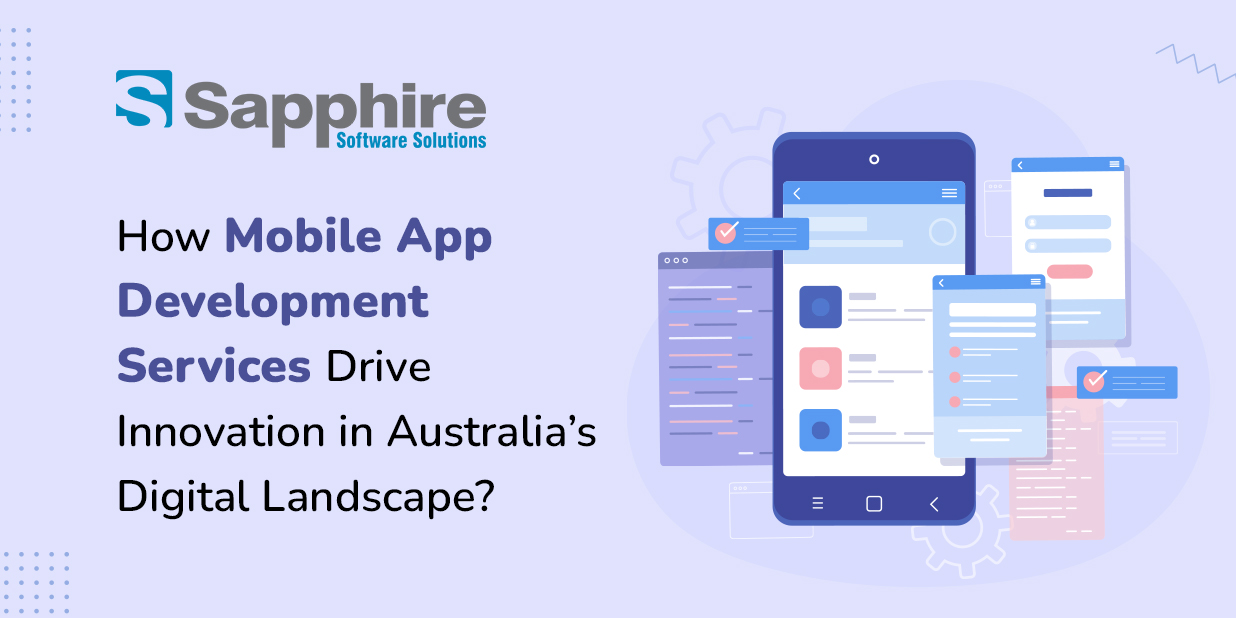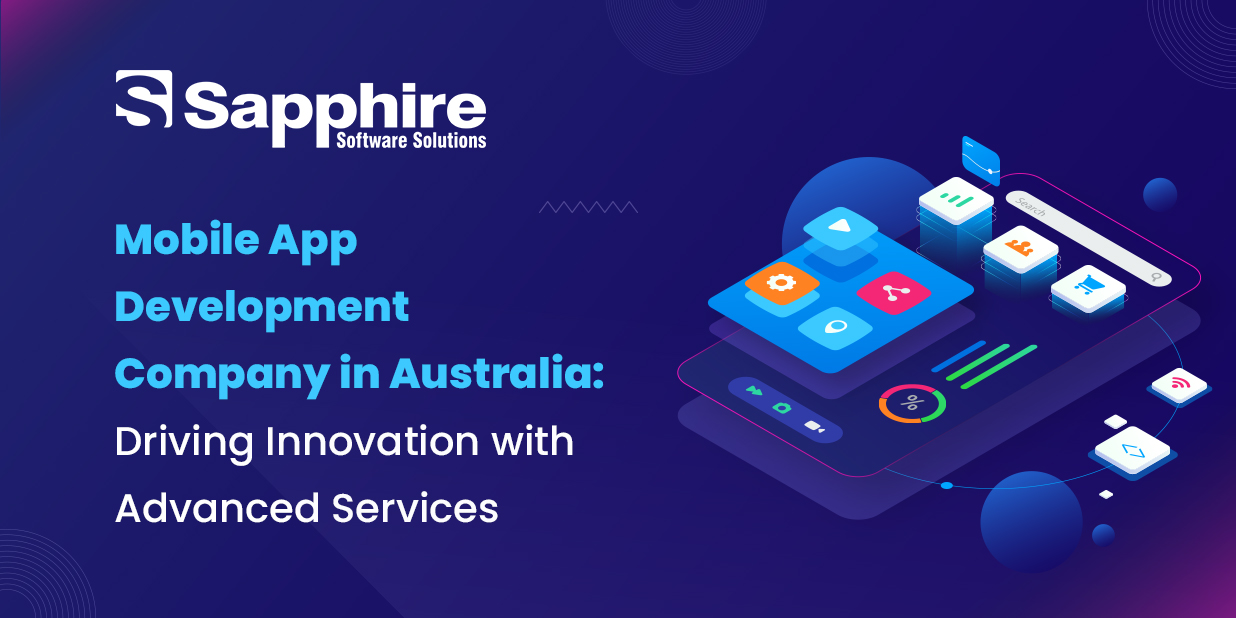In today’s digital-first world, businesses rely heavily on their data strategy to stay competitive, agile, and forward-thinking. When it comes to managing modern applications with large volumes of unstructured or semi-structured data, MongoDB often emerges as a go-to solution. But why is that? What makes MongoDB Development Services so crucial for innovation and flexibility?
Whether you’re an aspiring developer, a tech enthusiast, or a business decision-maker, understanding how MongoDB works, its ecosystem, and the ways it integrates with various technologies can give you a significant edge. Let’s dive into this fascinating world of MongoDB and discover how it empowers organizations across the globe.
What is MongoDB?
To put it simply, MongoDB is a NoSQL, document-oriented database designed for speed, scalability, and flexibility. Unlike traditional relational databases, MongoDB stores data in BSON format (binary JSON), allowing for a more natural data structure. This makes it an ideal choice for developers building modern, high-performance applications.
What truly sets MongoDB apart is its schema-less design. That means you don’t need to predefine the structure of your data, making it incredibly adaptive to changes during the development lifecycle. With its robust query capabilities and broad language support (including MongoDB GoLang, MongoDB JS, Python, and more), it’s no wonder so many companies are turning to MongoDB Development Services for innovative solutions.
How Does MongoDB Work?
Unlike relational databases that use tables and rows, MongoDB uses collections and documents. Each document is a set of key-value pairs and can include arrays, nested documents, and even other complex data types. This allows developers to model data in ways that are closer to how applications represent information internally.
You can use MongoDB query language to filter, sort, and project specific data from your collections. For example, finding all users with a certain email domain or aggregating sales data over time becomes straightforward with the MongoDB aggregate pipeline.
And with MongoDB Atlas, MongoDB’s fully managed cloud offering, organizations can deploy multi-cloud applications effortlessly. Whether you’re using MongoDB AWS integration for cloud deployments or MongoDB Compass for a visual exploration of your database, the ecosystem is designed for both power and usability.
Comparing MongoDB to Other Databases:
So, how does MongoDB stack up against traditional databases like MySQL or PostgreSQL?
- Flexibility: In MongoDB, you don’t need to worry about altering your schema as your application evolves. This gives developers far more agility compared to rigid schema structures in SQL-based databases.
- Scalability: Sharding—splitting data across multiple machines—is easy to implement, unlike traditional databases, where horizontal scaling can be complex and expensive.
- Performance: Since MongoDB stores data in a JSON-like format, read/write operations are often faster, especially for data that doesn’t fit well into rows and columns.
- Developer Experience: The ecosystem around mongodb js, mongodb node, and mongodb npm packages allows seamless integration into modern JavaScript-based tech stacks, offering faster development and deployment cycles.
Top MongoDB Tutorial Resources to Boost Your Development Skills:
Whether you’re a beginner or looking to refine your skills, the right MongoDB tutorial can be a game-changer. Here are some top resources:
- MongoDB University – Official and comprehensive.
- FreeCodeCamp – Offers an excellent crash course on YouTube.
- Academind & Traversy Media – For those who love video tutorials.
- MongoDB Documentation – Thorough and updated with the latest MongoDB version.
- Dev. to & Medium Blogs – Community-led experiences and project walkthroughs.
Each of these resources also covers how to run mongodb query commands, perform mongodb aggregate operations, and use mongodb compass for GUI-based management.
How to Install MongoDB on Windows, macOS, and Linux?
The process to install MongoDB is simple but varies slightly across platforms.
On Windows:
- Visit the official site and download MongoDB for Windows.
- Run the MSI installer and follow prompts.
- Open the MongoDB shell or MongoDB Compass to interact with your instance.
On macOS:
- Use Homebrew: brew tap mongodb/brew && brew install mongodb-community.
- Start MongoDB service: brew services start mongodb/brew/mongodb-community.
- You’re set!
On Linux:
- Import the MongoDB public GPG key.
- Add the repository for your distro.
- Run sudo apt install -y mongodb-org.
Each installation supports various MongoDB versions—make sure to get the latest for full features and better security.
How to Integrate MongoDB with Node.js?
If you’re using JavaScript on the backend, you’ll want to connect MongoDB using MongoDB Node integration.
Here’s a quick step-by-step:
1. Initialize Project:
bash
CopyEdit
npm init -y
2. Install MongoDB Driver:
bash
CopyEdit
npm install **mongodb npm**
3. Write Your Connection Script:
js
CopyEdit
const { MongoClient } = require(“mongodb”);
const uri = “mongodb://localhost:27017”;
const client = new MongoClient(uri);
async function run() {
try {
await client.connect();
const database = client.db(“testDB”);
const collection = database.collection(“users”);
const result = await collection.insertOne({ name: “Alice” });
console.log(result);
} finally {
await client.close();
}
}
run();
This script demonstrates how easy it is to connect, mongodb how to create a database, and run queries—all with a few lines of code.
Exploring the MongoDB Latest Version:
The latest version comes packed with features that cater to both developers and DBAs. Some notable updates include:
- Field-Level Encryption: Enhanced security for sensitive data.
- Time Series Collections: Optimized storage for time-based data like logs or sensor data.
- New Aggregation Operators: Simplifies complex queries using MongoDB aggregate.
- Cluster-to-Cluster Sync: Makes MongoDB backup and migrations seamless.
Staying up to date with MongoDB versions ensures your application benefits from the latest performance improvements and security patches.
MongoDB Benefits:
Here’s a quick summary of key MongoDB benefits:
- Flexible Data Models – Schema-less design fits evolving data needs.
- High Availability – Built-in replication ensures minimal downtime.
- Performance at Scale – Horizontal scaling is native.
- Powerful Query Language – Use intuitive MongoDB query formats.
- Cross-Language Support – From MongoDB GoLang to MongoDB JS, it fits anywhere.
- Visualization Tools – MongoDB Compass makes data management easy.
These MongoDB benefits make it a perfect choice for real-time applications, analytics, content management, and more.
Why Partnering with a MongoDB Development Company Can Future-Proof Your Data Strategy?
Engaging a professional MongoDB Development Company can be a game-changer for your business. Here’s why:
- Tailored Architecture: Get a database structure designed specifically for your application’s needs.
- Secure Integrations: Ensuring safe usage across MongoDB AWS and other cloud platforms.
- Performance Optimization: Leveraging MongoDB database tools for tuning and load balancing.
- Data Migration: Smoothly move from legacy systems to modern stacks using MongoDB Development Services.
- Ongoing Support: Receive 24/7 maintenance, MongoDB backup, and monitoring.
In an era where data is the most valuable resource, a trusted MongoDB Development Company helps safeguard your future.
How to Find the Best MongoDB Developers for Your Next Project?
Great MongoDB Developers are not just those who can write queries—they understand scalability, security, and data modeling.
Here’s what to look for:
- Hands-On Experience: Can they demonstrate knowledge of MongoDB installation, how to create a database, and run MongoDB aggregate operations?
- Full-Stack Knowledge: Especially in tech stacks involving MongoDB JS, MongoDB Node, and MongoDB npm.
- Familiarity with Tools: They should be comfortable using MongoDB Compass, MongoDB database tools, and managing deployments via MongoDB Atlas.
- Cloud Expertise: Experience with MongoDB AWS setups is a huge bonus for enterprise projects.
- Version Control: Awareness of different MongoDB versions and their use cases is critical for long-term success.
Use platforms like GitHub, LinkedIn, and tech communities to vet potential candidates or consider hiring through a professional MongoDB Development Company for peace of mind.
Real-World Use Cases of MongoDB Across Industries:-
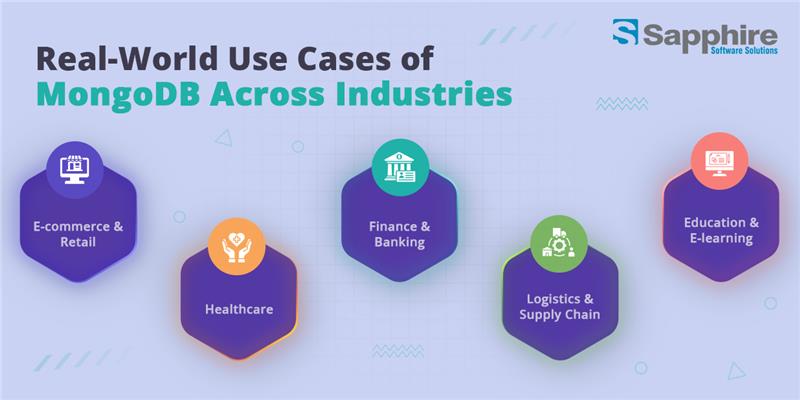
1. E-commerce and Retail:
Online retailers often deal with huge catalogs, dynamic product attributes, and real-time inventory changes. The flexible schema of MongoDB allows these companies to handle complex product data without friction. Whether it’s customer reviews, promotions, or shopping cart data, MongoDB Development Services help manage it all efficiently.
Additionally, many e-commerce brands integrate their platforms using MongoDB Node and MongoDB JS, ensuring fast, seamless, and scalable solutions.
2. Healthcare:
The healthcare industry needs databases that can handle diverse data types—electronic health records, medical imaging, prescriptions, and more. Thanks to MongoDB types and its support for complex data structures, healthcare organizations use it for building HIPAA-compliant platforms.
The ability to integrate with mongodb aws and support mongodb backup further enhances security and availability, both of which are critical in this sector.
3. Finance and Banking:
Banking apps deal with millions of transactions daily and must maintain high performance and security. With the aggregation framework (MongoDB aggregate) and support for real-time analytics, MongoDB helps financial institutions manage customer data, transactions, and even fraud detection models. Combining MongoDB Development Services with external APIs, enterprise banks now build scalable customer platforms using MongoDB GoLang for high-speed backend processing.
4. Logistics and Supply Chain
Operational agility and real-time tracking are crucial in logistics. MongoDB’s time-series collections, available in the mongodb latest version, allow companies to store and analyze vehicle locations, shipment statuses, and delivery routes with ease. Developers use mongodb npm and mongodb node packages to integrate MongoDB into dispatch systems and warehouse tracking applications.
5. Education and E-learning:
EdTech platforms must store content like video lessons, student performance, quizzes, and user behavior data. By using MongoDB database tools, institutions can streamline content delivery and enhance student personalization.
Whether you’re building a recommendation engine or tracking thousands of concurrent students, MongoDB Developers make it manageable.
Empower Your Applications with MongoDB a Smart Data Management
Final Thoughts:
Innovation doesn’t come from just writing better code—it’s about choosing the right tools to build agile, scalable, and secure systems. MongoDB Development Services offer a modern, flexible approach to data management that empowers developers and enterprises alike.
From setting up your first mongodb install to deploying a cloud-native app using mongodb atlas, the journey is filled with powerful possibilities. Whether you’re running simple applications or complex enterprise platforms, MongoDB gives you the freedom to innovate faster and scale smarter.
Ready to transform your next project with the power of MongoDB? Invest in the right people, the right tools, and the right strategy—because in the world of data, flexibility is the new superpower.
FAQs:
1. Is MongoDB suitable for enterprise-level applications?
Absolutely. With tools like MongoDB Atlas for cloud scalability and MongoDB Backup for disaster recovery, it’s widely used in mission-critical systems.
2. Can MongoDB handle real-time analytics?
Yes, the MongoDB aggregate framework is designed for complex data transformations and real-time analytics use cases.
3. What skills should MongoDB Developers have?
They should know how to mongodb install, use mongodb query, manage mongodb types, understand mongodb versions, and integrate with tools like mongodb compass and mongodb js.
4. How does MongoDB integrate with other languages and platforms?
Thanks to its robust drivers and community support, MongoDB works seamlessly with MongoDB GoLang, MongoDB JS, Python, Java, and more.
5. Is MongoDB open source?
Yes, MongoDB is open-source, with enterprise features available through commercial licenses or MongoDB Development Company partnerships.



















